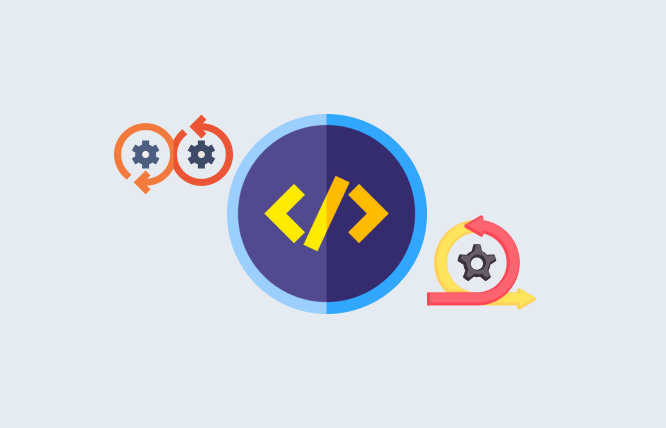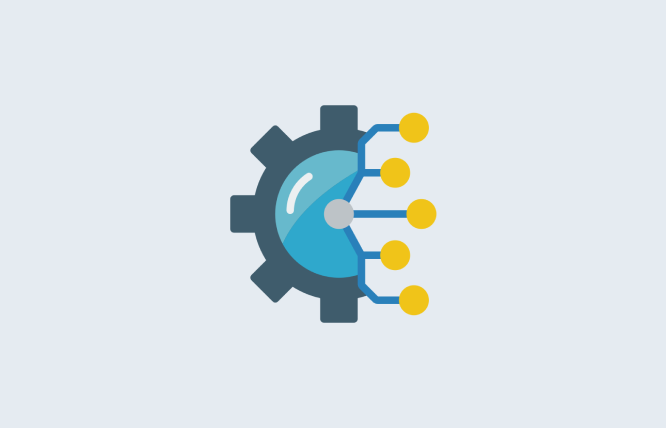Introduction
Today’s leading DevOps configuration management tools are a must for organizations that seek to make the best of their IT processes.
Throughout the continuously evolving field of IT operations, it is observed that DevOps has come as a massive game-changer that has the potential to revolutionize the manner in which companies deploy, develop, and manage software applications. It is imperative to state that automation is at the centre of DevOps. This is important for the attainment of continuous integration and delivery pipelines.
Note that configuration management tools play a vital role throughout the automation journey, which allows companies to enhance efficiency, properly streamline their IT processes, and assure consistency throughout a set of environments. The purpose of this blog is to look at the leading DevOps configuration management tools. The tone and styling of this blog are great, especially for those individuals who have little knowledge regarding configuration management tools in DevOps or similar concepts, such as Azure DevOps configuration management.

Leading Configuration Management Tools of Today
With enterprise technology solutions on the rise, configuration management plays a vital role in this day and age. Whether you are looking for Kubernetes consulting services or an azure cloud consulting company, there are certain aspects that need to be kept into consideration from your business’s end. Let’s have a look at today’s famed and reputed configuration management tools:
Ansible
This is one of the most prominent configuration management tools in DevOps because of its ease of usability and simplicity. Ansible is well-regarded for its agentless architecture and its ability to leverage SSH to communicate with remote servers. This goes on to simplify deployment and eliminate the requirement for installation of client software on managed nodes.
Many experts have commended the fact that YAML (Ansible’s declarative language) permits human-readable and concise automation scripts, thereby making them accessible to system administrators and developers. Due to its massive library of modules alongside robust community support, Ansible is great for configuration, automating provisioning, and orchestrating tasks throughout various infrastructures.
Puppet
This is a renowned player throughout the configuration management space. Also, it is well-regarded for its model-driven approach associated with automation. In the case of Puppet, users have the option of explaining their infrastructure by utilizing a declarative language. The master-agent architecture of Puppet makes sure that nodes converge to the required state specified in the manifests. It has come to the observation of many that Puppet is great at managing heterogeneous environments and large-scale deployments. This is because of its reliable reporting capabilities and dependency resolution.
Furthermore, the Puppet Enterprise offers event inspection role-based access control, thereby empowering companies to properly govern their often highly complex infrastructure. This point regarding Puppet is often cited by both its critics and admirers.
Chef
This is a robust automation platform that follows a useful infrastructure-as-code approach. This means that it treats infrastructure configurations as code artefacts. By making use of Ruby (Chef’s domain-specific language), any given user has the option of defining their infrastructure’s desired state. Additionally, Chef makes sure that the systems are able to converge properly in this state. Many critics have come to the conclusion that Chef offers a good degree of scalability and flexibility. This means that it is appropriate for the managing of complex environments that span various clouds alongside on-premises infrastructure
A host of Chef’s critics appreciate the fact that Chef Automate presents comprehensive compliance and visibility features. This then goes on to allow companies to properly maintain their audit trails, thereby seamlessly enforcing regulatory standards.
SaltStack
This is also called Salt, and it differentiates itself with a real-time communication model and event-driven infrastructure. Compared to pull-based systems, it is in Salt’s nature to apply a push-based approach. This will then allow granular and rapid control over the changes in infrastructure. Moreover, Salt’s Python-based configuration language and modular design permit customization and extensibility. This lets users tailor automation workflows as per their particular requirements.
It is because of SaltStack Enterprise that companies get access to a host of enterprise-grade features such as security compliance, workflow automation, and job scheduling. This allows them to properly and effectively optimize their DevOps practices.
Jenkins
Primarily, this is considered a continuous integration server. At the same time, it is regarded as offering reliable capabilities for automating configuration management tasks. It is because of Jenkins’ plugin ecosystem that it is able to seamlessly integrate with a host of configuration management tools, such as SaltStack, Puppet, Chef, and Ansible. As a result, it allows today’s companies to properly incorporate configuration management in their CI/CD pipelines.
Note that Jenkins Pipeline is considered to be a reliable domain-specific language for defining build pipelines as code. This lets teams properly automate their complete software delivery process. This ranges from code testing and compilation to configuration and deployment management.
Terraform
Before getting into the details of Terraform, it is important to highlight the fact that this is not strictly a configuration management tool. Regardless, it should be mentioned here that it plays a critical role in infrastructure provisioning and orchestration. Furthermore, Terraform adopts an infrastructure-as-code paradigm. This allows it to let users manage and especially define infrastructure resources throughout various providers utilizing a declarative configuration language referred to as HashiCorp Configuration Language. It is because of its provider ecosystem that encompasses today’s renowned cloud providers and on-premises infrastructure providers that Terraform eases the process of managing and provisioning infrastructure components. Due to this fact, Terraform becomes an essential entity in the DevOps toolkit.
To Sum it Up
DevOps configuration management tools are known to allow today’s tech-savvy organizations to standardize and automate their IT operations. This goes on to drive reliability, efficiency, and agility throughout a given software delivery lifecycle. It could be the configuring of software components, provisioning infrastructure, or the enforcement of compliance policies; the tools offer the foundation for creating reliable CI/CD pipelines, thereby increasing the speed of innovation.
If a given company is able to make use of the best practices and the right tool combinations, it can truly unlock the massive DevOps potential. This will then allow them to stay ahead of the competition with business management solutions. Moreover, if you believe that the information stated in this blog has helped you then contact a devops managed service provider today.
Finally, understand that FuturByte comes as a reliable microservices design and development provider that is well-versed in DevOps configuration management tools. So, if you have any questions about DevOps configuration management tools, don’t forget to give them a call.
Frequently Asked Questions
In simple terms, configuration management tools in DevOps come as reliable software solutions that are meant to automate the management, configuration, and provisioning of IT infrastructure resources. This includes applications, networks and servers. It is because of these tools that there is the assurance that infrastructure configurations are reproducible, consistent, and properly aligned with the required states throughout every environment.Generally, it is seen that configuration management tools in DevOps play a very important part in ensuring that any given corporation achieve its business objectives of various sorts.
It is important to note here that configuration management tools play a vital role throughout DevOps as they allow organizations to properly automate a host of repetitive tasks, manage infrastructure at scale, and maintain consistency throughout environments. It is because of these tools that there is a degree of facilitation with the collaboration among operation and development teams. This goes on to ensure the enhancement of efficiency, security, reliability, and the streamlining of deployment processes.
Note that configuration management tools emphasize automating the management of any given infrastructure resources. This is done by the enforcement of the required configurations and assuring consistency. When we look at the infrastructure as code tools, they tend to allow users to properly define infrastructure configurations by utilizing code and managing infrastructure as programmable resources.It is pertinent to state here that configuration management tools usually go on to manage runtime configurations, and the Infrastructure as Code tools manage and provision infrastructure resources from any given declarative codebase.
Let’s say that a given company is evaluating DevOps configuration management tools. In this scenario, it should take into account a host of factors, such as extensibility, compliance capabilities, security features, community support, integration capabilities, flexibility, scalability, and ease of use.Moreover, various considerations, such as agentless architectures vs. Agen-based, support for diverse environments, and licencing models have the potential to affect the general tool selection process. If you are yet to grasp proper understanding regarding DevOps configuration management tools then consult an expert that is well-versed into the matter.
Have questions or feedback?
Get in touch with us and we‘l get back to you and help as soon as we can!




